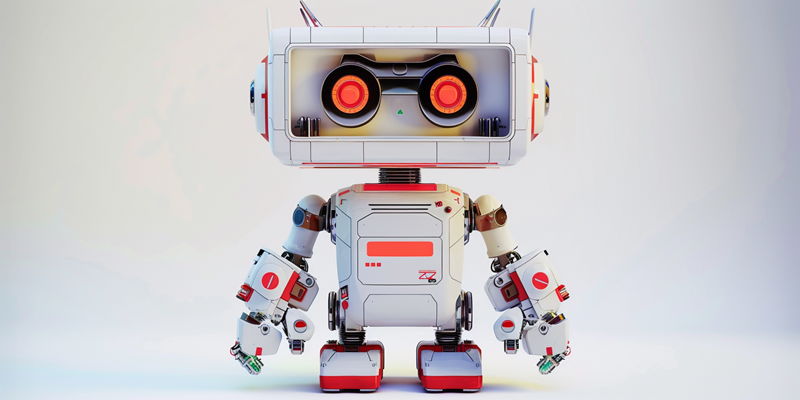Alvik, Arduino’s newest educational tool, bursts onto the scene as a versatile, programmable robot designed to bridge the gap between learning and practical application in the fields of coding and robotics. This introduction sets the stage, highlighting Alvik’s innovative approach to making robotics accessible and its potential to revolutionize how students, teachers, and enthusiasts engage with technology.
A Versatile Design for Interactive Learning
Alvik’s transformative design marks a significant leap in interactive learning. It’s not just a static piece of hardware; it’s an adaptable companion that can morph into several robotic forms—a rover, bulldozer, or a delivery robot. Each iteration is a new adventure, offering myriad possibilities for users to explore and learn. Its adaptable sensor ports and connectors do not just tickle the fancy of learners but also offer them a tangible way to grasp the complexity of robotics. By allowing a seamless transition through different robotic configurations, Alvik does more than educate; it excites and inspires, which is at the heart of effective learning.
Arduino is shipping Alvik with an array of sensors and motion control systems integral to its hull, powered by the robust Arduino Nano ESP32, which illustrates an ethos of accessibility. There’s no need for a bag full of add-ons; Alvik comes ready to sense, move, and interact with its environment. This is particularly advantageous for educators and beginners who can move beyond mere theoretical instruction to hands-on interaction, bridging the gap between abstract concepts and tangible experiences.
Integration with LEGO and Custom Builds
Alvik’s capabilities aren’t just limited to what’s in the box. Its LEGO Technic connectors serve as a passport to the extensive world of LEGO components, while M3 screw connectors invite users to attach custom 3D-printed or laser-cut pieces. The message is clear: Alvik is more than an educational tool—it’s a canvas for imagination. This integration carries significant weight for hands-on learning, giving students the power to personalize and visualize their creative ideas. It teaches an essential lesson: the boundary of robotics is as wide as the horizon of one’s creativity.
The synergy between Alvik and the LEGO system democratizes robotics. It ensures that the learning curve isn’t steep only for those with advanced technical knowledge but also approachable for individuals with a basic understanding of popular building blocks. The mere act of connecting a LEGO part to Alvik can spark the ‘Eureka!’ moment where theory transitions into practice. Imagine a classroom where every student can turn their imagined robot into a functioning reality; Alvik makes this possible.
Embracing Coding with MicroPython
In the arms of Alvik, coding becomes less daunting. By employing MicroPython, a leaner iteration of Python crafted for microcontrollers, Alvik speaks a language that beginners can easily comprehend. MicroPython’s simplified syntax is akin to learning a new language through immersion and conversation, rather than rote memorization of verb tables and grammar rules. The programming simplicity of Alvik is pivotal. It empowers learners to command their robotic ally without getting ensnared in the complexities of code, which can often discourage new learners.
The promise of future block-based programming updates is akin to Alvik laying down stepping stones for learners. This progression in learning tools caters to an even younger demographic, ensuring that the foundational understanding of programming concepts is solidified early on. By making coding more approachable, Alvik isn’t just a tool for teaching robotics—it becomes a mentor for a lifelong journey in technology.
Communication and Collaboration
When it comes to robotics, communication is key. Alvik’s array of connector types, like servo, I2C Grove, and I2C Qwiic, equip it to handle diverse motion and sensing tasks. This universality in communication underlines Alvik’s core trait – its collaborative nature. These connectors act as conduits of creativity, channels through which learners can unite components in inventive ways. The result is a powerful educational loop where learning feeds into experimentation, which then circles back into deeper learning.
This connectivity is a gateway to complex projects that require synchronized operations between parts. Users venture into advanced robotics concepts organically as they discover the intricacies of Alvik’s communication capabilities. It’s a hands-on approach to learning that fuels not just the understanding but also the passion for robotics.
Guided Learning Through Structured Courses
Arduino’s structured courses are the launchpad from where users can embark on their robotics journey with Alvik. In line with CSTA and NGSS standards, these project-based modules are not just about passing information but are about forging experience. Practical, hands-on learning cements concepts far more effectively than theoretical learning alone. These courses underpin a pathway that helps transition from simple to complex robotics applications, ensuring a robust learning experience.
The importance of guided learning in the educational process cannot be overstated. By providing direction through structured projects, Alvik’s courses bridge the divide between novices and experienced technologists. This structured learning path serves the diverse needs of learners, from educators looking to build out lesson plans to students seeking to understand robotics from the ground up.
Breaking Barriers to Advanced Robotics
Alvik, Arduino’s latest foray into educational resources, is generating buzz as an innovative, programmable robot. Specifically tailored for education, Alvik serves as a conduit between theoretical learning and hands-on experience in coding and robotics. This new tool is not just about instruction; it’s a leap toward making the intricate world of robotics approachable for learners. With Alvik, students, teachers, and tech hobbyists are handed the keys to a new kingdom of tech fluency – it’s poised to transform their interactions with robotic technology. By melding learning with actual practice, Alvik embodies the future of educational tech, offering experiences that used to be out of reach for many. This robot is more than a gadget – it’s a gateway to innovation and a testament to Arduino’s commitment to education and skill development in a tech-centric era.

